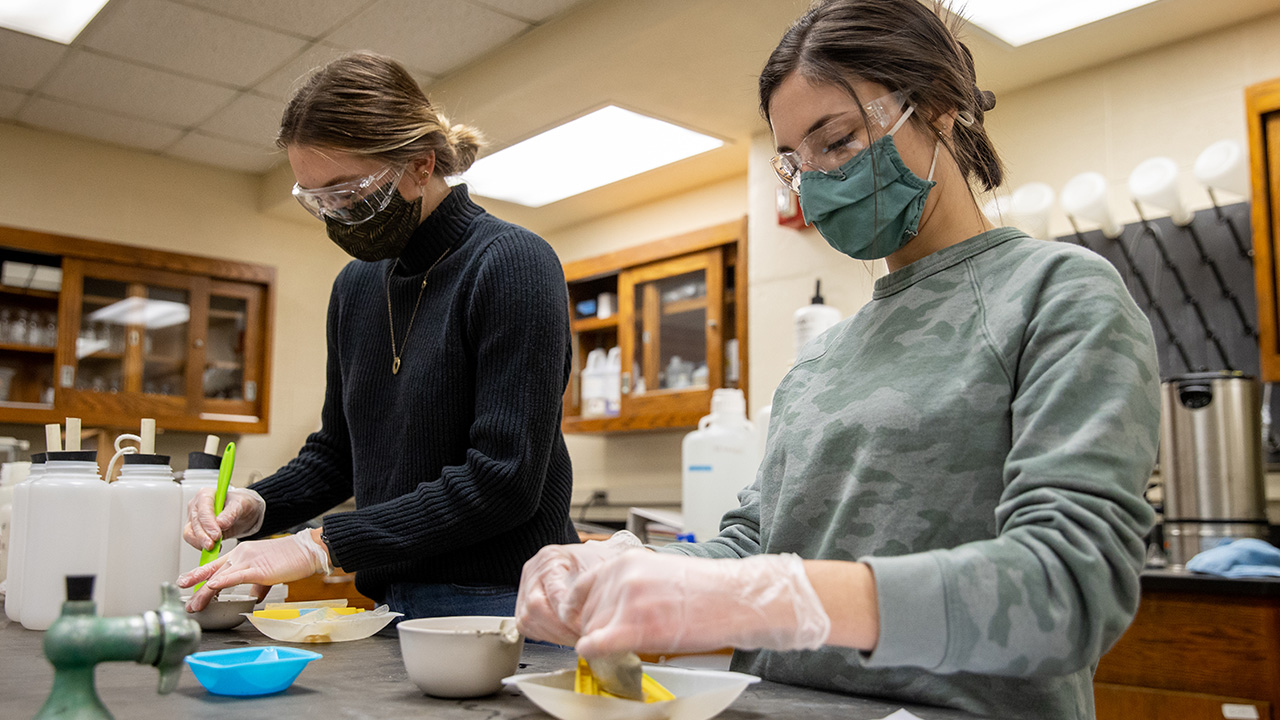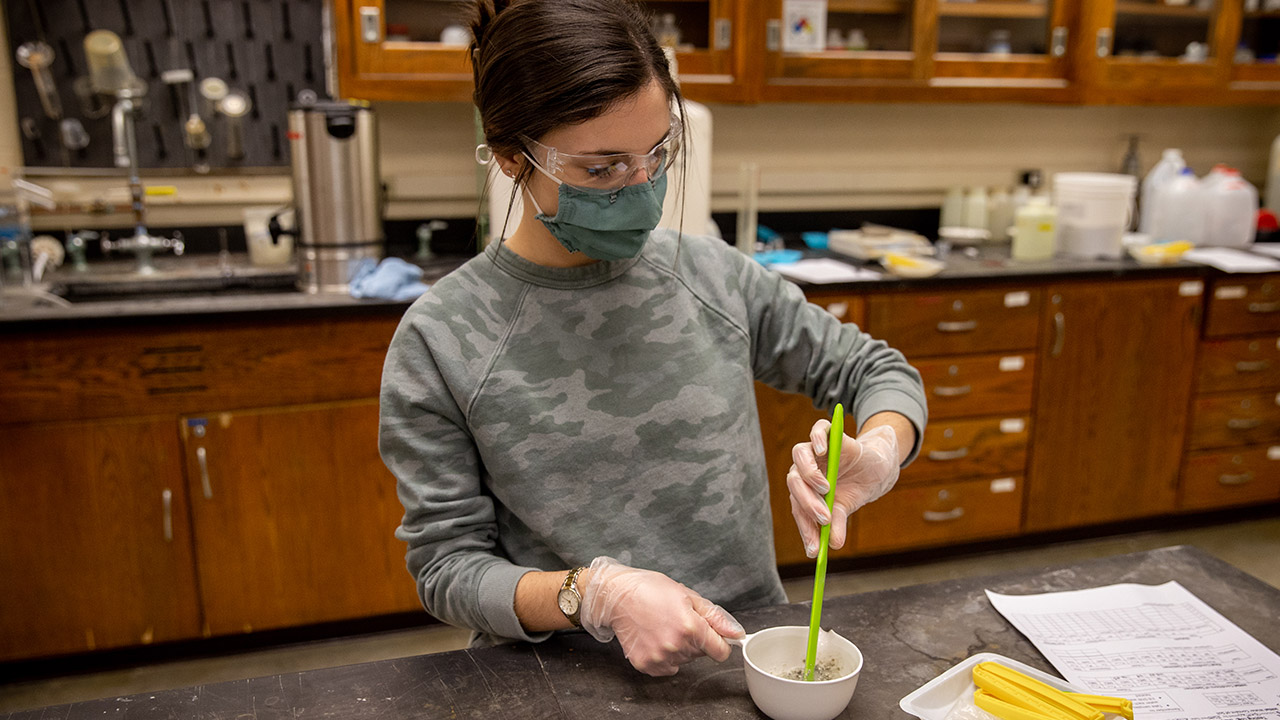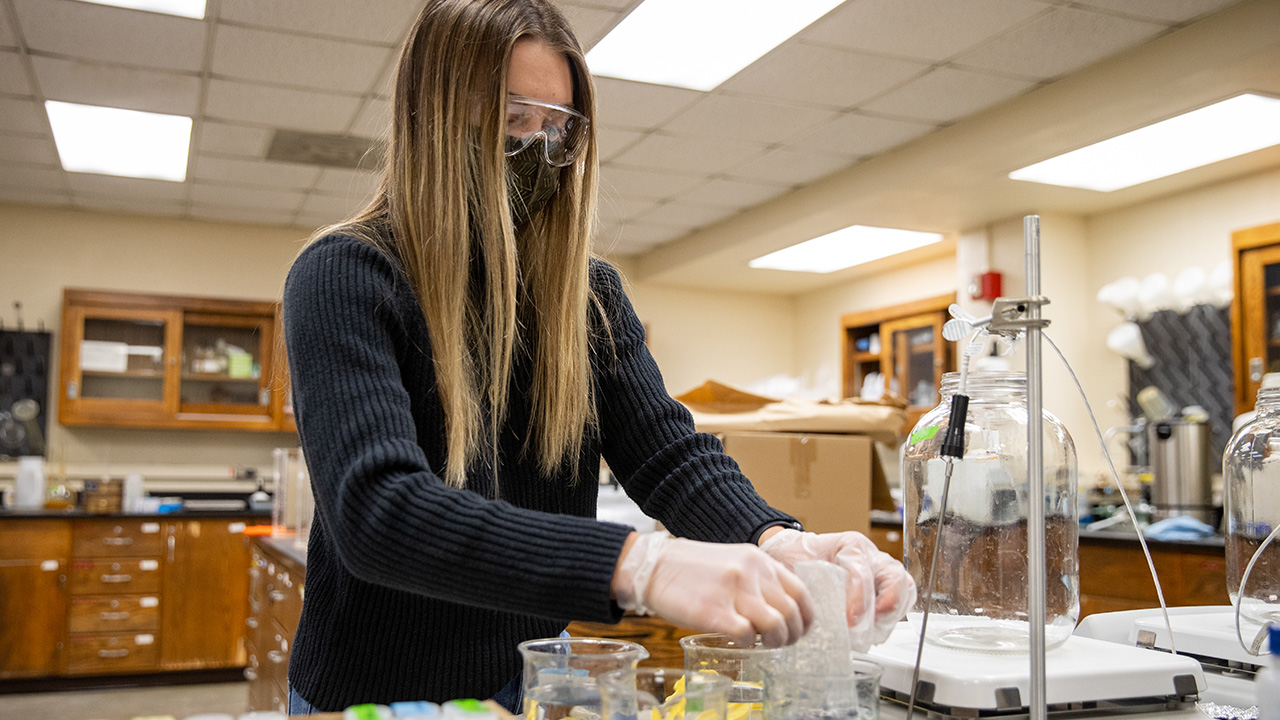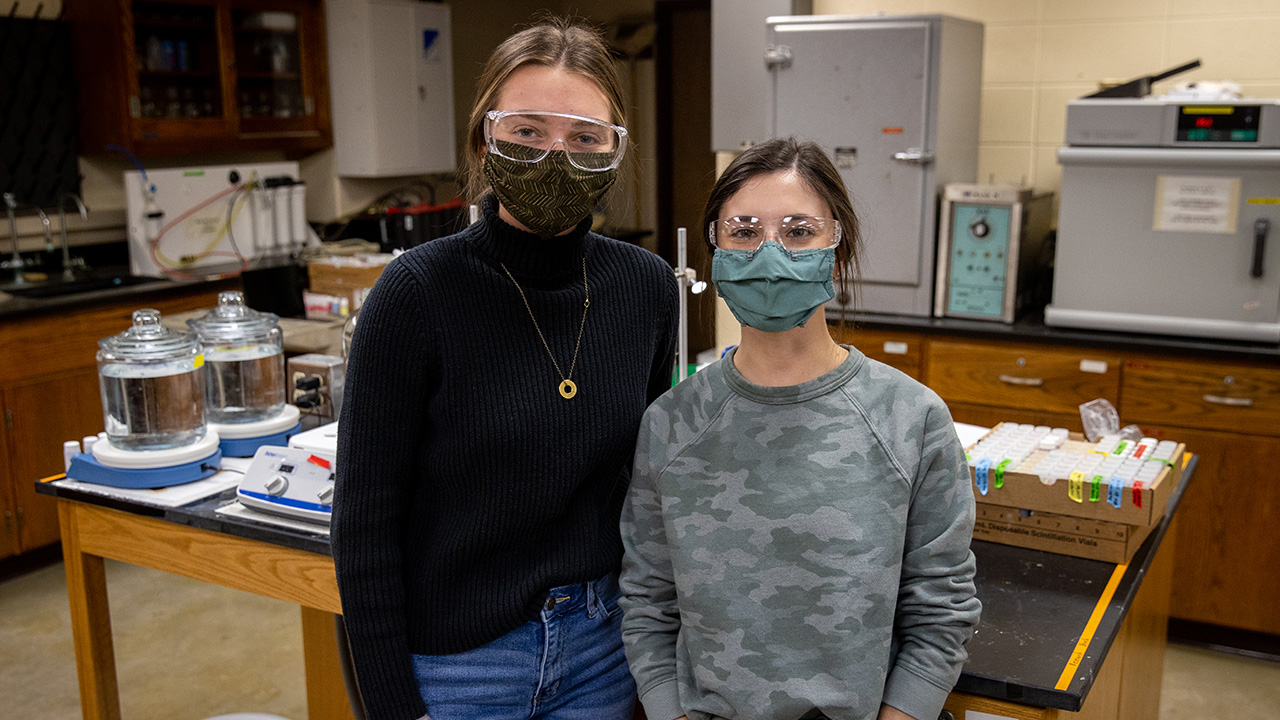



A group of civil and environmental engineering students at the University of Wisconsin-Platteville are researching a solution for safer long-term nuclear waste disposal by studying the characteristics of bentonite, a naturally-occurring clay. They will present their findings at next month’s annual Research in the Rotunda event in Madison, Wisconsin.
Bentonite is used in the construction of barriers for waste – from every day municipal waste to hazardous or radioactive waste. Its high-swelling and low permeability properties help protect the soil and groundwater below the waste.
“Bentonite is a high absorbing clay,” explained Victoria Chanez, a senior environmental engineering major from Oshkosh, Wisconsin. “When bentonite is exposed to, or mixed with, water or a solution, it swells a lot. That’s why we are trying to use variations of bentonite as a containment barrier, because it – hypothetically – will hold liquid for a long time.”
Because radioactive waste has a life span of at least 10,000 years, the students are investigating bentonite’s properties and behavior when exposed to various conditions, in order to better predict the effectiveness of its use for long-term nuclear waste disposal.
“We’re running tests with different temperatures and concentrations to measure the characteristics of enhanced bentonites and how they react,” said Jenna Springer, a sophomore environmental engineering major from Florence, Wisconsin.
The students are performing a series of tests using two types of bentonites with varying amounts of added polymer. The results of the tests will indicate the most effective material for the least environmental harm when engineering a containment barrier to hold nuclear waste.
Both Chanez and Springer began working on this research the first semester of their freshman year, having both received the New Freshman Undergraduate Research, Scholarly and Creative Activity Scholarship.
“This research project is one of the reasons I chose UW-Platteville,” said Chanez. “I was deciding between UW-Platteville and another college, but the other college couldn’t give me a research opportunity as a freshman, and I really wanted that experience as soon as possible. Now that I’m doing the interview process of finding a full-time job, I can tell how much the research experience has given me a leg up.”
“Being on this team has allowed me to meet other motivated students and make really great connections, such as with our advisor, Dr. Bohnhoff,” added Springer. “I’ve gained a lot of confidence in the lab, write my own testing programs, interpret research papers, and analyze and present data. I’ve gained a lot of beneficial skills that will carry over to the workforce.”
This year marks the 18th annual Research in the Rotunda event, which will take place on Wednesday, March 9. Held in the capitol building in Madison, the event brings more than 100 students from campuses throughout the UW System to share their research with the public and legislators. Springer and Chanez are looking forward to sharing the potential impacts of their research and the importance of undergraduate research opportunities.
“I hope the legislative leaders can see how important our research is for the environment and the society,” said Springer. “Also, providing the opportunity to do undergrad research definitely motivates this younger generation to help make a change.”
Chanez said she also hopes that state leaders can see how collaborative and far-reaching the impact of work done on UW-Platteville’s campus is. Villanova University in Pennsylvania is one collaborator on this research project.
“The research we are doing here is part of a larger picture as well. Not only do we work with others across the country, we also attend global webinars,” said Chanez. “We have those opportunities as students, and we’ll continue to have those opportunities in our future careers because of the connections we’ve made as young professionals.”
For more information on Research in the Rotunda, visit www.wisconsin.edu/research-in-the-rotunda/.
This work is supported by the National Science Foundation under Grant No. 1812569.